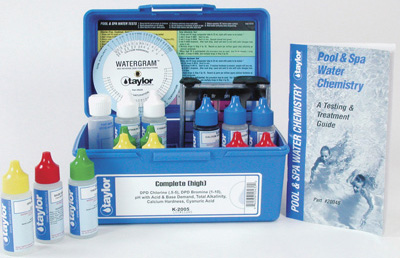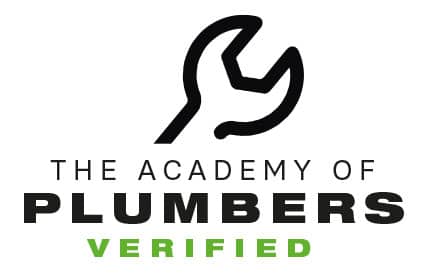
Manufacturers of quality colorimetric tests (DPD and OTO) have advance their test kits and procedures to a very reliable science. Follow the instructions precisely and the results will be extremely accurate. The supplied instructions are easy to follow and will give tips on how to get the most out of the test kit and avoid a false color match.
Accurate water testing cannot be over stated for effective pool and spa service. It is not possible to properly treat water if the sanitizer residuals, pH, total alkalinity, calcium hardness and other key constituent levels are unknown.
The causes for most errors in testing occur when the instructions are ignored or not followed to the letter. Poor testing habits, short cuts or not understanding the test results are all causes for testing inaccuracy.
At Aquajoy Spa And Pool we consider water testing and balancing a crucial part of pool ownership. Clean clear and safe water is the end result. With this in mind we decided to revisit some water testing basics. The following can serve as a good start or refresher on test procedures.
The Basics:
The most basic of all, read and comprehend the instructions that came with the test kit. Choose a test kit that you are comfortable with. It is important to understand that although reagents may look similar from one test kit to the next they are not. Each manufacturer has unique testing chemicals and comparators that will not read properly in another test kit. The procedures for testing may be similar but are not interchangeable.
Along with proper test kit use the ability to learn water chemistry basics is desired. Accurate test results are useless without knowing what the results actually mean. The test kit will offer a window into water conditions in terms of sanitizer levels, water balance, total dissolved solids, and cyanuric acid levels. The more advanced tests will help ensure proper dosing of pool chemicals. Achieving accurate readings is important, but knowing how to interpret those results will ensure the desired results.
There are differences between some types of tests and test kits. An OTO test will reveal total chlorine, whereas a DPD test will give you a measure of free available chlorine, combined chlorine, and total chlorine. We recommend the DPD type test kit because of the ability to read the difference between free and combined chlorine.
It’s common to find OTO test kits in the residential market as they are cheap and easy to find. Most homeowners to use OTO because of the low volume of usage(bather load) making, total and combined chlorine levels less important in those settings. For high-use pools (commercial or residential), a DPD test kit will indicate combined chlorine levels, which can determine whether or not there is need to shock the pool.
How to use the Test kit:
Water testing for pools and spas is not difficult, so long as you follow some simple measures and use basic common sense!
- Keep the comparator clean: Accurate test results begin with a clean comparator. The test tubes should be rinsed well before and after every test. Unclean tubes may result in staining or discoloration of the tubes, which may result in incorrect readings. Remaining water or reagents from a previous test may also skew the readings. Never cap a test tube with your finger. Oils and other matter on your skin can distort results (an Orange, for example, has a low pH which may result in a low reading even if the water is actually balanced). Use the cap that comes with the kit.
- Sample collection: Collect water samples from 15-18 inches below the water’s surface, to avoid the oils and other materials that may affect the results. Stay 6 inches away from the pool walls and away from the returns, which may have higher concentrations of sanitizer. Never test unless the system has been running prior to the test. This ensures the chemicals are properly mixed throughout the body of water. Avoid taking samples from “dead spots” such as steps or corners, sun shelves or zero depth entries. Test the water immediately after collecting it. Chemical values can change in water that sits in the test tubes. When taking a sample into your local pool store, make that your first stop, changes in temperature and time will alter the sample. A good practice is to obtain samples from different areas of the pool, especially a larger pool or one with a diving well.
- Accuracy and consistency: Hold the dropper bottles vertically and squeeze gently to obtain a uniform drop size. Holding the reagent dropper bottles at an angle may result in inconsistent reagent application which will impact the results.

Replace yearly
The precise amount of water in the test tube is crucial (this small sample represents the whole pool). The waters meniscus forms a small raised contour around the edges of the sample, fill test tubes so the bottom of the waterline is precisely on the indicated “fill-to” line.
- Reagent lifespan: Keep reagent bottles tightly sealed. Excessive heat or freezing will cause an errant reading. Store the test kit in a cool dark place. Replace reagents that have been left out in the sun or have passed their expiration date. Reagents should be replaced every year it insures proper results.
Do not store reagents next to water treatment chemicals, which could slowly deteriorate test kit components. Do not directly handle reagent tablets and avoid contact with liquid reagents
- Reading test results: Read test results against a white background when using a color comparator. It may be necessary to hold a piece of white paper behind the comparator when reading results. This procedure will remove background color interference, which can affect test results. Sunglasses can distort readings depending on the color of the reagent and the tint of sunglasses lenses.
Visit our Google page for a video on proper testing.
Please note: the focus of this post is on reagent type test kits. Test strips, electronic meters or in-store testing centers may have different parameters. Read and understand their individual instructions. Aquajoy Spa And Pool do not recommend the use of test strips or OTO test kit unless they are backed up with a DPD test kit. The strips are accurate but can easily become contaminated.
- Some chemical reagents are toxic, so it’s always important to store test kits out of reach of children.
- Test pool water at minimum once a week, for best results three times a week.
- Never test after adding a chemical, wait four to six hours.
- Add chemical in small amounts, it is simpler to add more chemical later than to adjust for overdosing.
- Always add chemicals to water!
Sources:
Aqua Magazine, LaMotte and Taylor Technologies articles and instruction manuals were used to obtain the information in this post.




